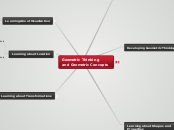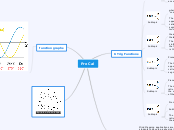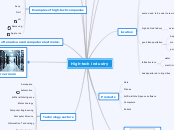Geometric Thinking and Geometric Concepts
This mind map is geared toward elementary math teachers, regarding geometric thinking and concepts. My goal for this map is to help teachers teach these difficult concepts to their elementary students.
These ideas come from chapter 20 of my elementary ed math methods class text book. [Van de Walle, (2013). Elementary and Middle School Mathmatics: Teaching Developmentally. 8th Ed. Pearson Education Inc. Upper Saddle River, NJ.]
During my research for this mind map, I was able to discover all sorts of games/activities, videos, and lessons for different grade levels. Take a look!
Learning about Transformations
Transformations for Level-2 Thinkers
Symmetries and Transformations
Transformations for Level-1 Thinkers
Tessellations
Similar Figures and Proportional Reasoning
Composition of Transformations
Transformations for Level-0 Thinkers
Line and Rotational Symmetry
Slides, Flips, and Turns
Learning about Location
Location for Level-2 Thinkers
Slope
Applying the Pythagorean Relationship
Coordinate Transformations Revisited
Location for Level-1 Thinkers
Examine Transformations on Coordinate Plane
Learning About Visualization
Visualization for Level-2 Thinkers
The Platonic Solids
Connection Earlier Activities
Visualization for Level-1 Thinkers
Properties of 2-D and 3-D Shapes
Visualization for Level-0 Thinkers
Different Orientations of Shapes
Learning about Shapes and Properties
Shapes and Properties for Level-2 Thinkers
Finding vs. Explaining Relationships
The Pythagorean Relationship
Definitions and Proofs
Shapes and Properties for Level-1 Thinkers
Dynamic Geometry Activities
Dynamic Geometry Software
Circles
Construction Activities
Sorting and Classifying Activities
Special Catagories of 3-D shapes
Special Catagories of 2-D Shapes
Shapes and Properties for Level-0 Thinkers
Composing and Decomposing Shapes
Developing Geometric Thinking
Implications for Instruction
Each activity can be adapted to an adjacent level by changing the way it is presented to students.
Use physical materials, drawings, and computer models at every level.
Adapt activities to the level of individual students to challenge them to operate at the next higher level.
Van Hiele Levels of Geometric Thought
Level 4: Rigor
Sorting and Classifying
Level 3: Deduction
Level 2: Informal Deduction
Level 1: Analysis
Level 0: Vizualization
Geometry Goals for Students
Geometric Content
Visualization
Location
Transformations
Shapes and Properties
Spatial Sense and Geometric Reasoning
Developed through meaningful experiences with shapes and spatial relationships.
The ability to mentally visualize objects and spatial relationships; turning things around in your mind.









